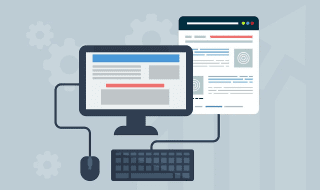
Virtual systems that have replaced climate-controlled rooms full of date servers and are popularly known as ‘the cloud’, thus giving rise to the term cloud computing, have taken not only the business world by storm but also made their presence felt in K-12 classrooms.
Most establishments are opting pay for cloud storage rather than investing in security servers for backup and primary school classrooms are not far behind. Cloud storage allows better interaction between parent, teachers and administrators and gives them the flexibility to monitor their children’s progress simply by logging on to an app to access reports and data from any place, at any time.
Data security on the cloud
According to recent reports, K-12 schools’ spending on cloud computing is expected to hit almost 35% of the IT budget by the end of 2016 resulting in savings of nearly 27% of money.

Data Security Is a Classroom Worry, Too
But despite how rosy it may sound, cloud computing is not devoid of its share of concerns, the foremost among them being the security of your data. Security concerns stem from a variety of factors, some of the most pertinent of which are as follows –
1) Security and access →
While you may not be investing in hardware and servers for storage, your cloud service provider definitely is. How secure that physical storage facility is and who has access to it and to what degree is something that needs to be looked into. After all, you do not want a hacker to tamper test grades, exam results or even course material. In this regard, the local laws of the region where the servers are located also need to be taken into consideration. Different countries have different legislations on security and privacy and the kind of agreement the cloud service provider may have signed with the regional administration regarding access and data control must be looked into.

Back to School Security for iPads in the Classroom
2) Backup facilities →
How the service provider plans to back up the data stored with them is another question. What happens in case of a system collapse or a natural disaster, how do they keep your data safe, etc are questions you should have solid answers to before investing in a cloud service. Else, imagine an accident wiping out days of data recording student details, progress reports, academic material – basically the entire school’s data and set of records. In February 2009, a server crash in Nokia had caused the companies cell phones to lose contacts stored on the companies cloud facility Ovi. Nokia was able to restore data only as far as January 23 meaning everything stored after that date was lost. Something similar happening to school records during an ongoing session would spell unmitigated troubles for the administration and teachers.
3) Quality of personnel employed and checks put in place →
More often than not, it is the people working in a company that prove to be the weakest link in the system. It is thus necessary that you as a consumer ensure that the firm you are hiring to provide you storage facilities impart top notch training to its employees. Your staff will be interacting with the employees of the cloud service provider in case of any queries or problems. The staff on the other end should be able to resolve problems and issues. Also, you should run a check on the levels of access the company lets its employees enjoy and what are their internal rules on security protocols such as changing passwords at regular intervals, cache clearing, etc. After all, you don’t want the storage facility itself to be pilfering your data.

3 Things That Concern K–12 Schools About the Cloud
4) Access allowed on schools’ behalf →
The responsibility to ensure data security rests not only on the cloud service provider but on the K-12 schools availing of the facilities as well. With several teachers, administrative staff and parent having access to the same set of data, a minor slip on part of one can cause data losses worth thousands of rupees. Also, you have to keep an at all times on password controls and user identities being issued to parents and staff to ensure there are no mix-ups. You must also insist that parents and employees change their passwords at frequent intervals and carefully monitor the levels of access you want to permit each section of users to have. For example, parents’ access should be limited only to their wards’ progress tracking and some sections such as teacher feedback, PTA discussions and fee payment. On the other hand, while you can allow administrators greater access for they have to monitor every aspect of a school’s functioning, insisting on multiple levels of security in this case would be prudent.
5) Long term viability of service provider →
Cloud computing is a fairly novel concept in the world of information technology and most service providers are new entrants in the market. As such, the long term business viability of the service provider is something you should take a careful look at before investing. What happens to your data in case the company goes out of business? Will the company shoulder the responsibility of handing over your data, and if they so, in what format will they be giving it back? A clear answer to these queries is essential before paying for cloud services.

Beware of the cloud: how pupil data privacy got problematic
While its benefits are too many to count, cloud computing does have its share of downsides. After all, every computer system that was once thought infallible has thrown up loopholes with time. So while cloud is a great concept, treading with some caution will be prudent on your part.




